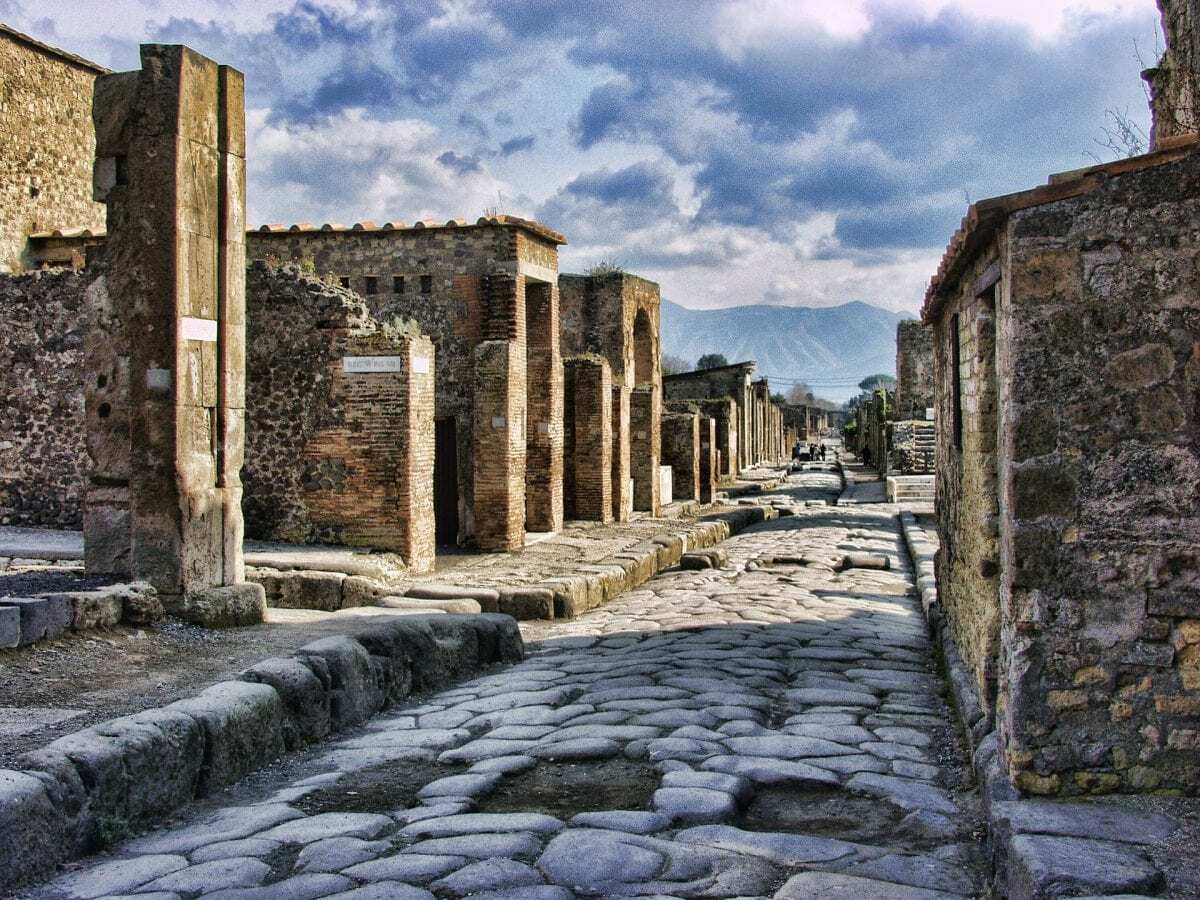Excavations at Pompeii by archaeologists have been revealed in a virtual tour of the archaeological park by Director Massimo Osanna.
Pompeii was a Roman city, located in the modern comune of Pompei near Naples in the Campania region of Italy. Pompeii, along with Herculaneum and many villas in the surrounding area was buried under 4 to 6 m (13 to 20 ft) of volcanic ash and pumice in the eruption of Mount Vesuvius in AD 79.
Largely preserved under the ash, the excavated city offered a unique snapshot of Roman life, frozen at the moment it was buried and remains a detailed insight into the everyday life of its inhabitants.
Using a done, the tour takes you through some of the recently discovered domus as part of the Regio V excavations over the past two years.
This includes an ornately decorated house with triclinium frescoes, painted portico and garden, the “House of the Orion” named after the mosaic of Orion contained within, and a street – Vicolo dei Balconi, with houses on both sides.
Director Osanna stated:
These excavations have yielded an extraordinary cross-section of the daily life of this city. Thanks to all of the archaeologists, architects, engineers and technicians who have worked tirelessly here with us, we have been able to document this extraordinary heritage in a highly technologically advanced way, commencing with drones, the images from which have been used to create this exclusive video which we offer you.
The House with the Garden
The “House with the Garden” was named after the discovery of a large garden with flowerbed boundaries. Palaeobotanists have been able to restore the garden in its correct context by studying the remains of surviving plant matter.
Facing the garden is a large portico with images in the Fourth Pompeian Style and a series of state rooms, including a large triclinium decorated with beautiful Fourth Style paintings, with alternating red and yellow panels, and paintings depicting myths linked to love. On one side we have Venus and Adonis, and on the other a fishing Venus, whilst on another wall we have Hercules and Omphale.
At the time of the eruption, eleven victims took refuge in the house who were mainly women and children. They probably died due to the pyroclastic flows rather than the large ashfall deposits that engulfed and suffocated most of the area.
The House of Orion
The “House of Orion” survived with much of its interior preserved. This includes an atrium showing stucco panels of various colours imitating coloured marble comparable to the Egyptian Ptolemaic court, and an exquisite mosaic of Orion, depecting one of the more iconographically obscure myths of the ancient world.

Director Osanna added: The owner of the house must have been greatly attracted to this myth, considering it features in two different rooms in which two different scenes of the myth are depicted. It is a small house which has proved to be an extraordinary treasure chest of art.”
Please note : Spoken commentary is in Italian – To translate subtitles into your respective language, YouTube will auto-translate:
1. Turn on Closed Captions (click the CC icon).
2. Click the Settings icon (the gear).
3. On that menu, click Subtitles/CC.
4. On the next menu, select Auto-translate.
5. Scroll through the list of languages and choose the appropriate one.






